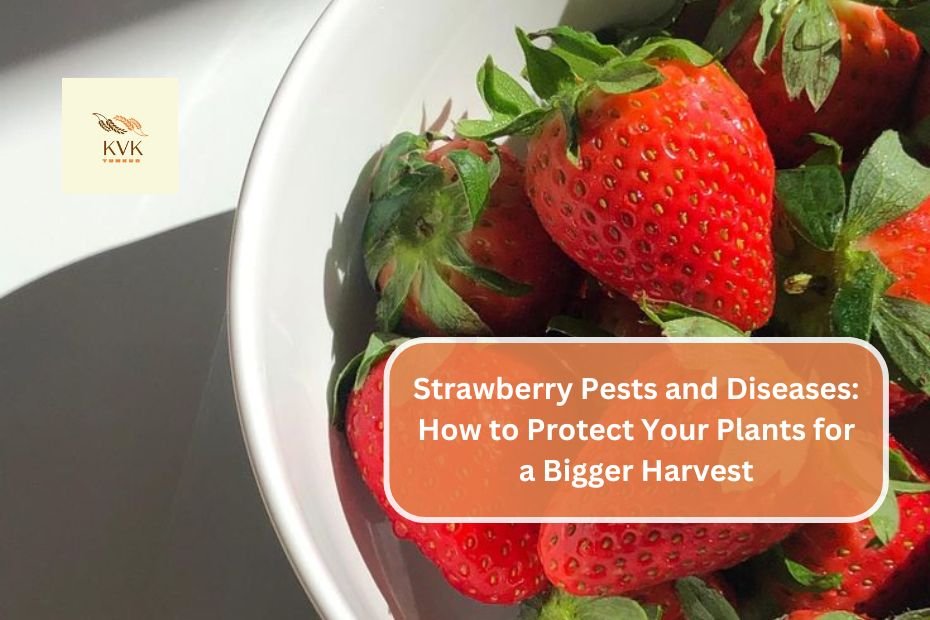Strawberries are a popular fruit, but they are susceptible to various pests and diseases that can significantly impact yield and quality. Understanding these threats and implementing effective management strategies is crucial for protecting your strawberry plants. Here’s a comprehensive overview of common strawberry pests and diseases, along with prevention and control measures.
Common Strawberry Pests
- Spider Mites
- Symptoms: Leaves may appear stippled or yellowed, and fine webbing may be visible on the undersides of leaves.
- Control: Introduce beneficial insects like ladybugs, or use insecticidal soap or neem oil to manage infestations.
- Aphids
- Symptoms: These small, soft-bodied insects cluster on new growth, causing leaves to curl and distort.
- Control: Encourage natural predators, such as ladybugs, or apply insecticidal soap to affected areas.
- Tarnished Plant Bugs
- Symptoms: Feeding damage can cause “button fruit,” where strawberries remain small and undeveloped.
- Control: Monitor for these pests during the growing season and use insecticides if necessary.
- Strawberry Root Weevils
- Symptoms: Larvae feed on roots, leading to poor plant growth and wilting.
- Control: Implement crop rotation and use traps or insecticides to manage adult populations.
Common Strawberry Diseases
- Gray Mold (Botrytis cinerea)
- Anthracnose
- Powdery Mildew
- Phytophthora Crown Rot
- Red Stele
General Prevention Strategies
- Site Selection: Choose a well-drained site with good air circulation to minimize moisture retention around plants.
- Crop Rotation: Rotate strawberry crops every 2-3 years to break disease cycles.
- Mulching: Use straw mulch to keep fruit off the ground, reducing the risk of soil-borne diseases like Phytophthora .
- Regular Monitoring: Inspect plants regularly for signs of pests or diseases to catch issues early before they spread.
- Watering Practices: Water early in the day to allow foliage to dry quickly, reducing the risk of fungal diseases.
Conclusion
Managing pests and diseases in strawberry cultivation is essential for achieving a healthy harvest. By understanding the common threats your plants may face and implementing effective prevention strategies, you can protect your strawberries from damage and enjoy a bountiful crop. Regular monitoring, proper cultural practices, and timely interventions will ensure your strawberry plants thrive!
| HOME | CLICK HERE |
| CATEGORY | CLICK HERE |

